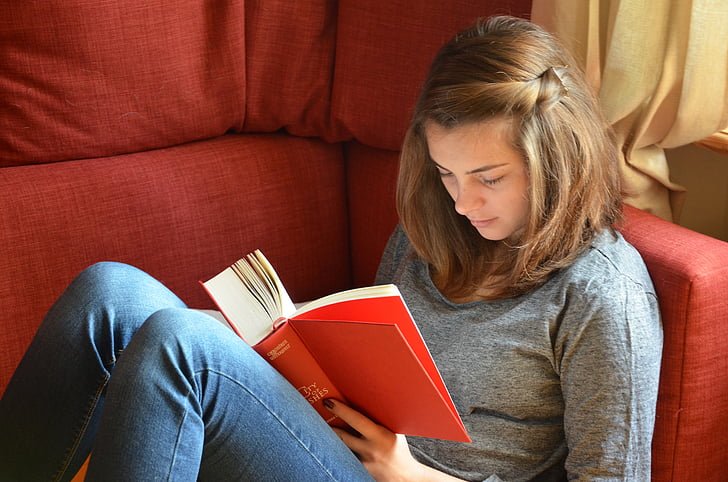7 Strategies for Busy Educators to Build Lifelong Readers
Follow these 7 time-saving strategies to help busy educators inspire a lifelong love of reading in their students. without adding to your workload.
Helping Students Thrive in a World of Distraction
Constant notifications, short attention spans, and screen overload have made students harder in building a strong relationship with reading. Cultivating lifelong readers is more important and more challenging than ever before. Yet, as educators, you know that reading is not just an academic skill; it’s a lifelong superpower. Strong readers become critical thinkers, empathetic citizens, leaders, and curious learners beyond the classroom walls.
But here’s the challenge: How do we spark and sustain a love for reading in students who are constantly pulled in a dozen directions? The answer lies in intentional, student-centered strategies.
Building lifelong readers doesn't require hours of extra prep or elaborate lesson plans. Following intentional and consistent strategies will help you to fit into your existing routines, and dig into what students already love: choice, connection, and curiosity. Whether you teach kindergarten or high school, below are seven practical ways educators can cultivate lasting reading habits, even in the busiest classrooms and the most distracted times. You will implement and create a classroom culture where reading isn’t just encouraged—it’s embraced for life.
1. Create a Rich Reading Environment

A reading-rich classroom isn’t just about having books; it’s all about building a space where reading is visible, valued, and celebrated. When students walk into your classroom and see books displayed, reading posters on walls, and peers engaged in reading, they build reading as part of their identity. In other words, they engaged their curiosity and connection while turning each page of the book. The sudden rush of dopamine builds up.
How to implement:
-
Build a diverse classroom library that reflects a range of cultures, genres, and reading levels.
-
Feature a “Book of the Week” or “Student Picks” display to keep curiosity high.
-
Establish an independent reading, reading 10–15 minutes daily makes a huge difference.
Why it matters:
The environment you create communicates what you value. A book-friendly space tells students, Reading happens here and this is where the connection and curiosity start, and that is all that matters.
2. Prioritize Student Choice
To encourage students to read more, let them choose what they want to read. While guided and whole-class texts have their place, the power of self-selected reading can't be overstated. When students are given autonomy, they're more likely to engage deeply and read consistently. This helps to build a strong interest in reading and to decide their preferences for their reading choices, rather than being recommended by you.
Simple ideas:
-
Offer free-reading time with access to a wide variety of genres.
-
Encourage students to explore graphic novels, magazines, audiobooks, or even fan fiction.
-
Use choice-based reading logs or book review stations to let students share what they love.
Why it matters:
Choice builds ownership. Students who get excited while reading are more likely to read independently. This aids in building outside the box rather than what is being read in class.
3. Be a Reading Role Model
One of the most influential things you can do as an educator is to show your students that you have a strong interest in reading, too. Share your reading life with them, what you’re currently enjoying, what book frustrated you, or what novel stuck with you long after you closed the final page. Having a conversation with them helps students build connections with you and develop an interest in reading.
Ways to model reading:
-
Post “What I’m Reading” signs on your classroom door or bulletin board.
-
Start the class once a week with a 3-minute book talk.
-
Share personal reading reflections to normalize ups and downs.
Why it matters:
Students pay attention to your habits. When they see you valuing reading, not just assigning it, they’re more likely to do the same. You want to show that you value reading as much as the student does.
4. Integrate Technology to Enhance, Not Replace, Reading

While screens are often blamed for declining reading habits, technology can also be a tool to spark interest and increase accessibility. Many students, especially reluctant readers, engage better with audio or digital formats. Rather than forcing them to dig into print books, you can recommend reading apps or audiobooks to build greater engagement.
Tools that support this:
-
Use apps like Libby or Sora for borrowing eBooks and audiobooks.
-
Try Newsela or CommonLit for leveled, high-interest articles tied to curriculum topics.
-
Allow students to create short video book reviews, digital book trailers, or infographics as reading responses.
Why it matters:
When tech is used creatively, it meets students where they are. Not every student likes to read in print. Digital tools can personalize reading experiences and offer multiple entry points for diverse learners.
5. Make Reading Social

Reading doesn’t have to be solitary. Making reading a shared experience boosts accountability, enthusiasm, and retention. When students talk about books, recommend titles, and see their peers engaged in reading, it builds a reading community, not just individual habits. The more your student reads, the more they build connections with other readers.
How to build community:
-
Start small group or partner book chats.
-
Create reading circles or “genre clubs” that meet once a week.
-
Celebrate reading milestones or “Reader of the Month” to display enthusiasm.
Why it matters:
Social reading makes reading feel fun and relevant. It shifts reading from a task to a shared cultural experience.
6. Connect Reading to Real Life Situations
Students are more likely to become lifelong readers when they see how reading relates to their lives, goals, personal situations, and interests. Relevance fuels motivation. Whether it’s a story that mirrors their experiences or nonfiction tied to career interests, meaningful connections deepen engagement.
Ideas to make reading relevant:
-
Pair fiction with real-world projects (e.g., read a mystery and then write your own).
-
Use articles concerning current events to begin discussions or debates.
-
Invite students to choose books based on themes they care about—climate, identity, justice, sports, etc.
Why it matters:
When students see the real-world application and emotional resonance of reading, they begin to understand its value beyond the classroom. This shows that reading is more than just a couple of pages.
7. Celebrate Progress, Not Perfection

Lifelong readers aren’t the ones who read the most pages or finish the most books. They’re the ones who keep coming back to books, even when it’s hard. For that to happen, we need to celebrate effort and growth, not just achievement. The best way to encourage reading is to establish a consistent reading routine.
How to celebrate progress:
-
Let students track their reading journeys through reading logs or visual charts.
-
Highlight personal reading victories: “First time finishing a chapter book!” or “Explored a new genre!”
-
Create reflection opportunities where students can share how their views on reading have changed.
Why it matters:
When you recognize progress, you build confidence. Confident readers keep reading, even when no one’s watching.
Real Talk: Time-Saving Tips for Busy Educators
It is understood that you’re balancing planning, grading, meetings, and managing 30 other responsibilities. Here’s how to implement these strategies without burning out:
-
Piggyback on what you’re already doing. If you assign bell-ringer activities, switch it to “Book Bellwork”, a few minutes of reading instead.
-
Use student leaders. Let students run book talks or update the classroom library display.
-
Batch your planning. Make a list of go-to book discussions, tech tools, and reading response formats you can reuse.
-
Collaborate with the librarian. They’re a goldmine of resources and support for classroom reading initiatives.
Final Thoughts: The Impact You’re Making
In a culture where reading is often prioritized for speed, entertainment, and test scores, educators who slow down and make space for reading are doing something radical and powerful. You’re not just teaching literacy, you’re teaching students how to think, reflect, and imagine reading in the real world.
And remember: even if you don’t see immediate results, the seeds you plant now can grow into a lifelong reading habit years down the line. A single book, a quiet moment of reading, or one conversation about a favorite story might be the thing that transforms a student’s relationship with reading forever.
Quick Recap: The 7 Strategies
-
Create a Rich Reading Environment
-
Prioritize Student Choice
-
Be a Reading Role Model
-
Integrate Technology Thoughtfully
-
Make Reading Social
-
Connect Reading to Real Life
-
Celebrate Progress Over Perfection
What’s one strategy you can try this week to build a culture of reading in your classroom?
Start small. Be consistent. Celebrate growth.
Busy educators like you have the power to shape lifelong readers—one page at a time.
What's Your Reaction?








